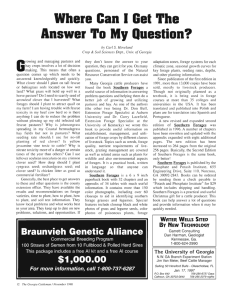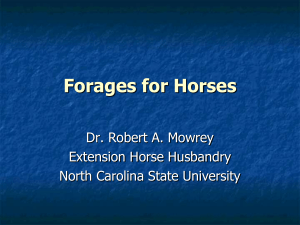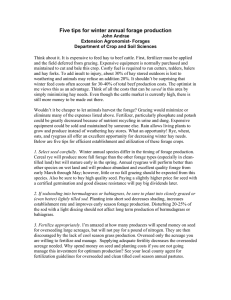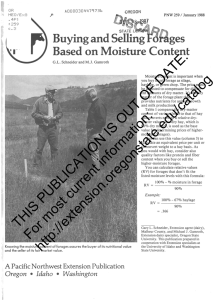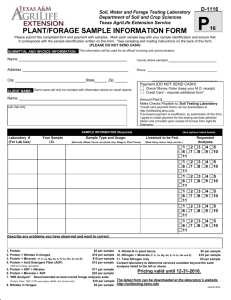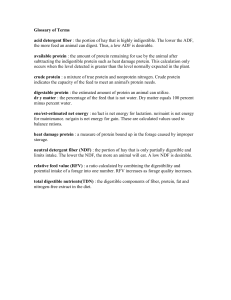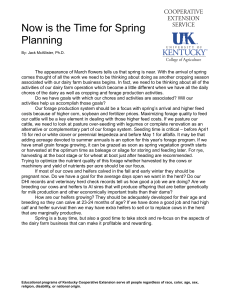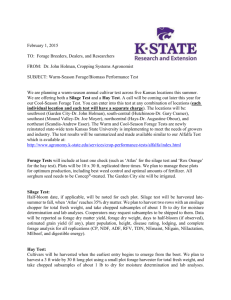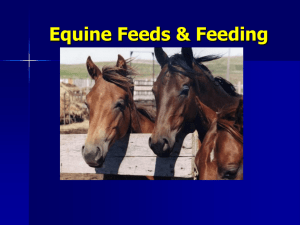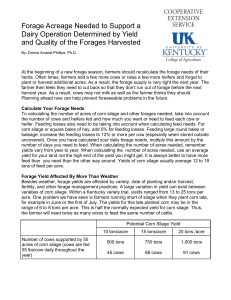Short Quality Forages to Feed Dairy Cows? Summertime Solutions
advertisement
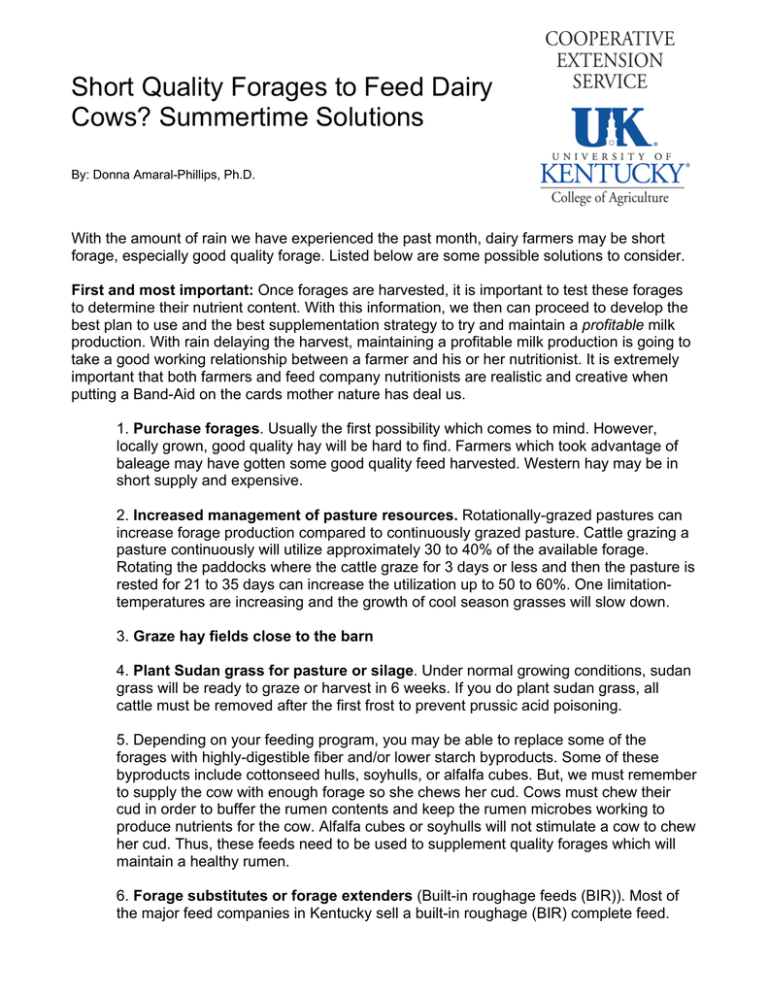
Short Quality Forages to Feed Dairy Cows? Summertime Solutions By: Donna Amaral-Phillips, Ph.D. With the amount of rain we have experienced the past month, dairy farmers may be short forage, especially good quality forage. Listed below are some possible solutions to consider. First and most important: Once forages are harvested, it is important to test these forages to determine their nutrient content. With this information, we then can proceed to develop the best plan to use and the best supplementation strategy to try and maintain a profitable milk production. With rain delaying the harvest, maintaining a profitable milk production is going to take a good working relationship between a farmer and his or her nutritionist. It is extremely important that both farmers and feed company nutritionists are realistic and creative when putting a Band-Aid on the cards mother nature has deal us. 1. Purchase forages. Usually the first possibility which comes to mind. However, locally grown, good quality hay will be hard to find. Farmers which took advantage of baleage may have gotten some good quality feed harvested. Western hay may be in short supply and expensive. 2. Increased management of pasture resources. Rotationally-grazed pastures can increase forage production compared to continuously grazed pasture. Cattle grazing a pasture continuously will utilize approximately 30 to 40% of the available forage. Rotating the paddocks where the cattle graze for 3 days or less and then the pasture is rested for 21 to 35 days can increase the utilization up to 50 to 60%. One limitationtemperatures are increasing and the growth of cool season grasses will slow down. 3. Graze hay fields close to the barn 4. Plant Sudan grass for pasture or silage. Under normal growing conditions, sudan grass will be ready to graze or harvest in 6 weeks. If you do plant sudan grass, all cattle must be removed after the first frost to prevent prussic acid poisoning. 5. Depending on your feeding program, you may be able to replace some of the forages with highly-digestible fiber and/or lower starch byproducts. Some of these byproducts include cottonseed hulls, soyhulls, or alfalfa cubes. But, we must remember to supply the cow with enough forage so she chews her cud. Cows must chew their cud in order to buffer the rumen contents and keep the rumen microbes working to produce nutrients for the cow. Alfalfa cubes or soyhulls will not stimulate a cow to chew her cud. Thus, these feeds need to be used to supplement quality forages which will maintain a healthy rumen. 6. Forage substitutes or forage extenders (Built-in roughage feeds (BIR)). Most of the major feed companies in Kentucky sell a built-in roughage (BIR) complete feed. These feeds generally are made from whole cottonseeds, cottonseed hulls, soyhulls and other grains and by products. They are designed to be fed straight with 6 to 8 lbs of average grass hay. The hay is important to maintain good rumen health. Generally, when fed straight cows will need 40-45 lbs of this BIR mixture. These BIR feeds also can be used to extend short forage supplies or to substitute for part of the poor quality forages in an attempt to maintain milk production. One possibility is to feed 10 lbs of the BIR mixture with poor quality wheat silage to increase the amount of energy in the total diet. Before feeding this option, it is important to review the feeding program to make sure the amount of grain and type of grain mix is appropriate for the amount and quality of wheat silage being fed. Educational programs of Kentucky Cooperative Extension serve all people regardless of race, color, age, sex, religion, disability, or national origin.

